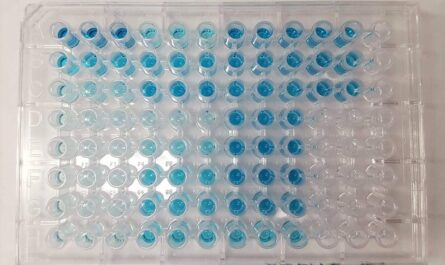Market Overview:
Leishmaniasis is a vector-borne disease caused by protozoan parasites of the genus Leishmania. It is transmitted by the bite of infected female sand flies. The infection causes a range of clinical manifestations, the most common being cutaneous leishmaniasis (CL), mucocutaneous leishmaniasis (MCL), and visceral leishmaniasis (VL). Symptoms of CL include skin sores that develop into ulcers, usually on exposed parts of the body like the face, arms and legs. MCL causes ulcers or nodules which often destroy the mucous membranes of the nose, mouth and throat. VL affects internal organs like the spleen, liver and bone marrow. Treatment involves drugs such as amphotericin B, pentavalent antimonials, miltefosine, paromomycin and liposomal amphotericin B.
Market Dynamics:
The Leishmaniasis Treatment Market Demand is primarily driven by an increasing prevalence of leishmaniasis infections globally owing to factors such as population growth, urbanization, and climate change. According to the World Health Organization (WHO), over 90% of visceral leishmaniasis cases occur in just 6 countries – Bangladesh, Brazil, Ethiopia, India, South Sudan, and Sudan. Similarly, about 90% of cutaneous disease burden is concentrated in Afghanistan, Algeria, Colombia, Brazil, Iran, Syria and Peru. The market is also driven by the launch of newer treatment drugs and drugs in combination therapy for enhanced disease management. However, low diagnosis rates, especially in developing regions pose a challenge to market growth.
SWOT Analysis (Strengths, Weaknesses, Opportunities, Threats)
Strengths:
– Expanding R&D activities on developing new drugs and treatment options.
– Growing government initiatives and funding to combating leishmaniasis.
– Increasing awareness related to leishmaniasis treatment and management.
Weaknesses:
– High cost associated with diagnosis and treatment of leishmaniasis.
– Lack of affordable and effective treatment options in developing regions.
Opportunities:
– Rising investment by pharmaceutical companies in clinical trials of pipeline drugs.
– Untapped growth opportunities in developing markets in Asia and Africa.
Threats:
– Limited healthcare access and infrastructure in endemic areas.
– Risk of drug resistance development against existing therapies.
Key Takeaways
The global leishmaniasis treatment market is expected to witness high growth, exhibiting CAGR of 4.4% over the forecast period, due to increasing prevalence of leishmaniasis globally. As per WHO estimates, 1.3 million new leishmaniasis cases are reported every year worldwide.
Regional analysis:
North America dominated the global market and is expected to maintain its lead during the forecast period. However, Asia Pacific is anticipated to grow at fastest pace, registering CAGR of over 5%, due to rising incidence of leishmaniasis in India, Bangladesh and other developing nations.
Key players:
Key players operating in the leishmaniasis treatment market are Knight Therapeutics, gland pharma, Sanofi, Novartis, GloxoSmithKline, Pfizer, Cheplapharm Arzneimittel GmbH and Jassen Pharmaceutical. These companies are focusing on expanding their product portfolio through acquisitions and collaborations.
Note:
- Source: Coherent Market Insights, Public sources, Desk research
- We have leveraged AI tools to mine information and compile it


